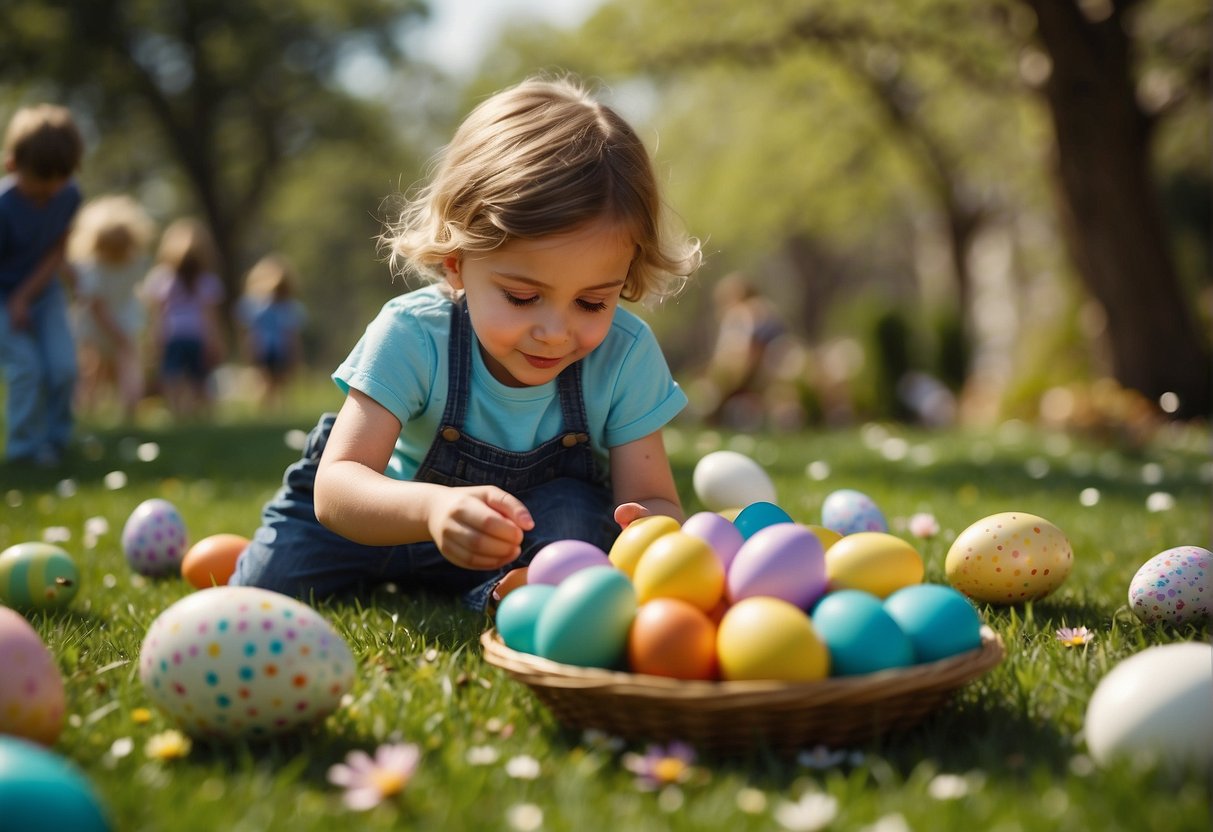Dressing like a toddler might seem like a straightforward task, but it requires a keen understanding of both the playful spirit and the practical aspects of a young child’s wardrobe. When I prepare for an occasion where embodying the essence of toddlerhood is key, such as during a themed event or Halloween, I focus on capturing the blend of comfort and candidness that characterizes a toddler’s daily outfit. Toddlers are known for their burgeoning independence and their efforts to dress themselves, which often leads to whimsical combinations that reflect both their developing dressing skills and their unique preferences.

My approach includes opting for bright, primary colors and patterns that are typical of toddler clothing. These choices not only reflect the vibrant and exploratory nature of toddlers but also lend an air of authenticity to the look. Consider the utility of garments as well; toddlers need clothing that allows for ample movement and flexibility, so stretchy cottons and loose fits are essential. They support the practicality that a parent would prioritize for ease of movement and play.
Moreover, creating an outfit that showcases a sense of emerging self-reliance is also important. Toddlers are at a stage where they are learning to assert their independence, including making choices about what they wear. Therefore, when I assemble my outfit, I make sure it seems like something a toddler would select if they had full reign of the closet—a testament to their individuality and newfound autonomy.
Understanding Toddler Fashion

In my years of experience with toddler fashion, I’ve learned to balances whimsy with practicality. To dress a toddler well, one must consider not just the look but the ease of dressing, safety, and how clothing can support a child’s burgeoning independence.
Essentials of Toddler Clothing
- Shirts and Tops: I look for shirts with wide neck openings or snaps to accommodate toddlers’ larger head sizes. Brands like Primary and Target often have great options.
- Bottoms: Elastic waists are a must for easy on-and-off. Pants and shorts should allow room for movement and play.
- Dresses: Simple, pullover styles work best for quick changes.
- Outerwear: Jackets should be roomy enough for layering in cooler months, and I often choose styles with hoods for added warmth.
Clothing Sizes
- Sizing: Typically, I opt to buy a size larger to accommodate rapid growth. Most brands, including discount and designer, use standard toddler size charts.
Seasonal Variations and Appropriate Attire
- Summer: Breathable fabrics like cotton help prevent overheating. Sunhats and sunglasses protect from UV rays.
- Winter: Layering is crucial. I start with a base layer, add insulation like a fleece, and top with a water-resistant outer layer.
- Rainy Season: Waterproof boots and jackets are staples to keep little ones dry.
Safety and Comfort Considerations
- Shoes: I prefer velcro shoes as they support toddlers’ developing motor skills. It’s easier for them to put on and take off their shoes, promoting independence.
- Hats and Accessories: Soft materials are essential, and they must fit snugly but not too tight.
Clothing Fasteners
- Zippers and Snaps: I seek clothing that helps toddlers practice fine motor skills, like pulling up a zipper or snapping a button.
- Loose Items: Ribbons, strings, or small detachable parts can be a hazard, so I avoid them or ensure they are securely fastened.
By paying attention to these key aspects of toddler clothing from safety to seasonal needs, one can dress a toddler both stylishly and sensibly.
Building a Toddler’s Wardrobe

When I set out to build a wardrobe for my toddler, I focus on balancing practicality with playful style. The goal is to select clothes that are not only functional and comfortable for school and play but also allow my toddler to express their burgeoning personality.
Essentials and Statement Pieces
It’s important to start with the basics. Here’s a list of essential items that I find indispensable for my toddler’s wardrobe:
- Onesies: A staple for layering, especially for younger toddlers.
- Overalls: Durable and versatile for everyday play.
- Rompers: Easy one-piece outfits ideal for busy days.
- Jumper: Perfect for transitional weather and can be dressed up or down.
I also include a couple of statement pieces that reflect my toddler’s personality, like a brightly colored jumper or a printed romper. While these items are more about style than necessity, they’re perfect for special occasions or photo-ops. Shopping for these can be fun, but I always keep an eye out for sales to ensure these additions are as affordable as they are cute.
Accessorizing for Fun and Function
Accessories can serve dual purposes: they’re enjoyable for my toddler to wear and can be functional.
Here’s a quick breakdown:
- Hats: Necessary for sun protection, and they can add a pop to any outfit.
- Sunglasses: Protect my toddler’s eyes while making them look incredibly adorable.
- Stickers: These can be used to personalize plain items, making them feel new and exciting.
- Pigtails: Not an accessory you can buy, but a simple hairstyle like pigtails can completely change the look of an outfit.
I ensure that the accessories I choose are safe for my toddler to use. Sunglasses, for example, should have UV protection, and hats should fit snugly but comfortably. For school-specific accessories, I make sure they comply with any dress codes and are easy to remove or attach as needed.
Developing Dressing Skills

When it comes to teaching toddlers to dress themselves, my focus is on promoting independence while making it fun and manageable. I take into account their developing motor skills and provide them with limited choices to boost their confidence.
Promoting Independence in Dressing
In my experience, starting with undressing is easier for toddlers, as it requires less coordination. I encourage parents to allow their child to practice taking off loose clothing, such as socks and Velcro-strapped shoes, which typically can be managed around the age of 1. As they get better at this, I gradually introduce more challenging items like buttoned shirts and pants with elastic bands.
- Limited Choices: To foster independence, I offer toddlers a limited selection of outfits. Overwhelming them with choices can lead to indecision and frustration. So, by presenting two or three options, I ensure the task of choosing is both manageable and empowering.
- Potty Training Considerations: I make it a point to select outfits that are easy to remove, especially for those in the midst of potty training. Pull-on pants are ideal as they allow for quick bathroom trips, aiding in the overall potty training process.
Games and Activities to Enhance Motor Skills
Enhancing a toddler’s motor skills is key to helping them master the art of getting dressed. I incorporate games and activities into their routine to make this learning process engaging.
- Dress-Up Play: Toddlers love dress-up fun! It’s an excellent way for them to practice dressing skills in a non-stressful way. I often lay out various costume pieces like capes, hats, and oversized shirts, and let them have a go. This not only makes it enjoyable but also challenges their coordination in a play-based context.
- Balancing Games: Balancing is a lesser-known but critical skill for getting dressed. I use simple activities like standing on one foot while putting on a pant leg to help toddlers develop better balance. Not only does it enhance their stability, but it also makes the act of dressing an exciting challenge.
- Motor Skills Drills: To strengthen fine motor skills, I introduce toddlers to tasks that require dexterity, like buttoning and zipping during play. These might be incorporated into puzzles or toys designed to simulate dressing actions.
By turning dressing into a series of fun, achievable steps, toddlers gradually build the skills and confidence they need for independence in getting dressed.
Dressing for Special Occasions

When dressing toddlers for special occasions, I focus on finding the right balance between comfort and style. Festive attire during holidays, and spirited garments for birthdays or school events can make these moments memorable.
Choosing the Perfect Outfit for Holidays
For holidays like Christmas, I opt for outfits in traditional colors, such as red and green, and add a playful touch with accessories like a pair of sunglasses or a festive hat. My table below outlines fitting choices for various holidays:
| Holiday | Outfit Recommendation | Accessory |
|---|---|---|
| Christmas | Red or green velvet dress | Reindeer antlers |
| Halloween | Themed costume | Pumpkin basket |
| Easter | Pastel-colored suit or dress | Bunny ears |
Halloween is a great opportunity for toddlers to wear a fun costume. I ensure the costume is safe and easy to move in, and pair it with comfortable shoes essential for trick-or-treating.
Outfit Ideas for Birthday Parties and School Events
For birthday parties, I go for vibrant colors and soft fabrics. A skater skirt or a pair of chinos matched with a themed T-shirt can be a fun, easy-to-wear option. Here’s a concise list of birthday party outfit ideas:
- Themed T-shirt (favorite characters or motifs)
- Comfortable sneakers or ballet flats
- Tutu skirts or suspenders for added flair
For school events such as picture day or graduations, I choose styles that are neat yet comfortable enough to last through the day’s activities. A collared shirt with dress pants or a modest, breathable dress with a cardigan works well for me. Polo shirts or A-line dresses can be smart options that don’t sacrifice comfort.
Managing Apparel and Care Tips

Managing toddler apparel efficiently involves adopting a methodical approach to cleaning and storage. These care tips ensure clothing remains in good condition for your child to wear.
Effective Cleaning and Maintenance
I prioritize gentle detergents for washing my toddler’s clothes to keep the fabric soft and suitable for sensitive skin. For tougher stains, I pre-treat with a stain remover before washing. When I clean shoes, I opt for surface-appropriate cleaners and scrub brushes to maintain their look and longevity. I make sure to follow each item’s label instructions for drying, as high heat can cause shrinking.
Clothes Cleaning Checklist:
- [ ] Pre-treat stains
- [ ] Use gentle detergent
- [ ] Wash with like colors
- [ ] Follow label drying instructions
Organizing and Storing Toddler Clothing
Keeping toddler clothing organized requires a simple yet effective system. I choose to sort clothes by type and use labeled bins for storage, making it easy and quick to put outfits together. Limited choices and larger sizes are hung for easy access and to prevent wrinkling. Shoes are paired and placed within the child’s reach to encourage them to pick and try to put them on independently.
Clothing Storage Tips:
- Keep daily wear accessible
- Use bins with labels for easy identification
- Hang larger sizes to prevent wrinkles
- Store shoes in pairs for easy matching
Innovative Parenting Hacks

In my experience, dressing a toddler can be as fun as it is challenging. Here, I’ll share key hacks to convert old outfits into fresh gear and where to target your shopping efforts for economical and quick solutions.
Transforming Old Clothes into New Outfits
I find that repurposing old clothes is both economical and creative. It’s simple to turn a rarely worn adult t-shirt into a toddler’s dress by cutting the shirt and adding an elastic band at the desired waistline. This not only saves money but also gives a unique touch to my child’s wardrobe. For pants that have grown too short, I often transform them into stylish shorts or capris, ensuring that favorite items get more wear and bringing new life to their look—boosting their confidence when they get to show off something “new.”
Shopping Smarter for Your Little Kid
When I shop for my toddler, I make it a point to hit sales and use discount codes. I look for multipack options, which usually come at a lower price per item, and I choose neutral colors and designs that can mix and match with ease, maximizing the number of outfits we can assemble. I always keep fun in mind, searching for clothes with appealing patterns or characters for a touch of whimsy. One of my primary shopping destinations is thrift stores, where I often stumble upon barely used, high-quality items that are both fun and cheap. It’s amazing what a good wash can do to make a second-hand item feel brand new to them.
Frequently Asked Questions

When dressing like a toddler for events like spirit week or theme days at school, focus on capturing the playful and simple essence of toddler attire. Here are some specific insights to help you nail the look.
What are the essential clothing items for achieving a toddler-style look?
To replicate a toddler’s outfit, I include brightly colored t-shirts, overalls, and comfortable bottoms like sweatpants or leggings. Footwear usually consists of simple sneakers or colorful boots, embodying the practical yet cheerful nature of toddler clothing.
What are some tips for adults dressing up as toddlers for spirit week?
For spirit week, I suggest choosing oversized items for a humorous, exaggerated look that evokes the appearance of a small child in grown-up clothes. I might add a whimsical touch, like a cartoon character print or a playful hat, to enhance the toddler theme.
How can I create a toddler-inspired outfit that’s suitable for a theme day at school?
My toddler-inspired outfit for a school theme day stays within the school’s dress code while showcasing elements common in young children’s attire. I might wear a graphic tee featuring a popular kids’ show and pair it with knee-high socks and brightly colored shorts.
What are the key differences when dressing as a toddler boy versus a toddler girl?
When I dress as a toddler boy, I usually opt for dinosaur or car prints, while for a toddler girl look, I might choose florals or butterfly patterns. Both styles, however, prioritize comfort and bright colors, so these elements remain consistent regardless of gender.
Can you provide advice on choosing the right accessories for a toddler-themed costume?
For accessories, I focus on playful items like bibs, pacifiers hung around the neck, or even a stuffed toy. My accessory choices tend to be exaggerated in size to highlight the playful theme and add a touch of humor.
What guidelines should adults follow to safely and respectfully dress like children for an event?
When I dress as a child, I aim to keep the spirit of fun and innocence without mocking or demeaning children. My selections are always made with respect and care, ensuring that the costume is appropriate for the context of the event and does not cross the boundaries of good taste.
- 15 Football-Themed Snack Ideas for Kids & Teens - September 9, 2024
- 15 Mistake Quotes For Kids - September 7, 2024
- Fun Shark Quotes and Sayings For Kids - September 7, 2024








